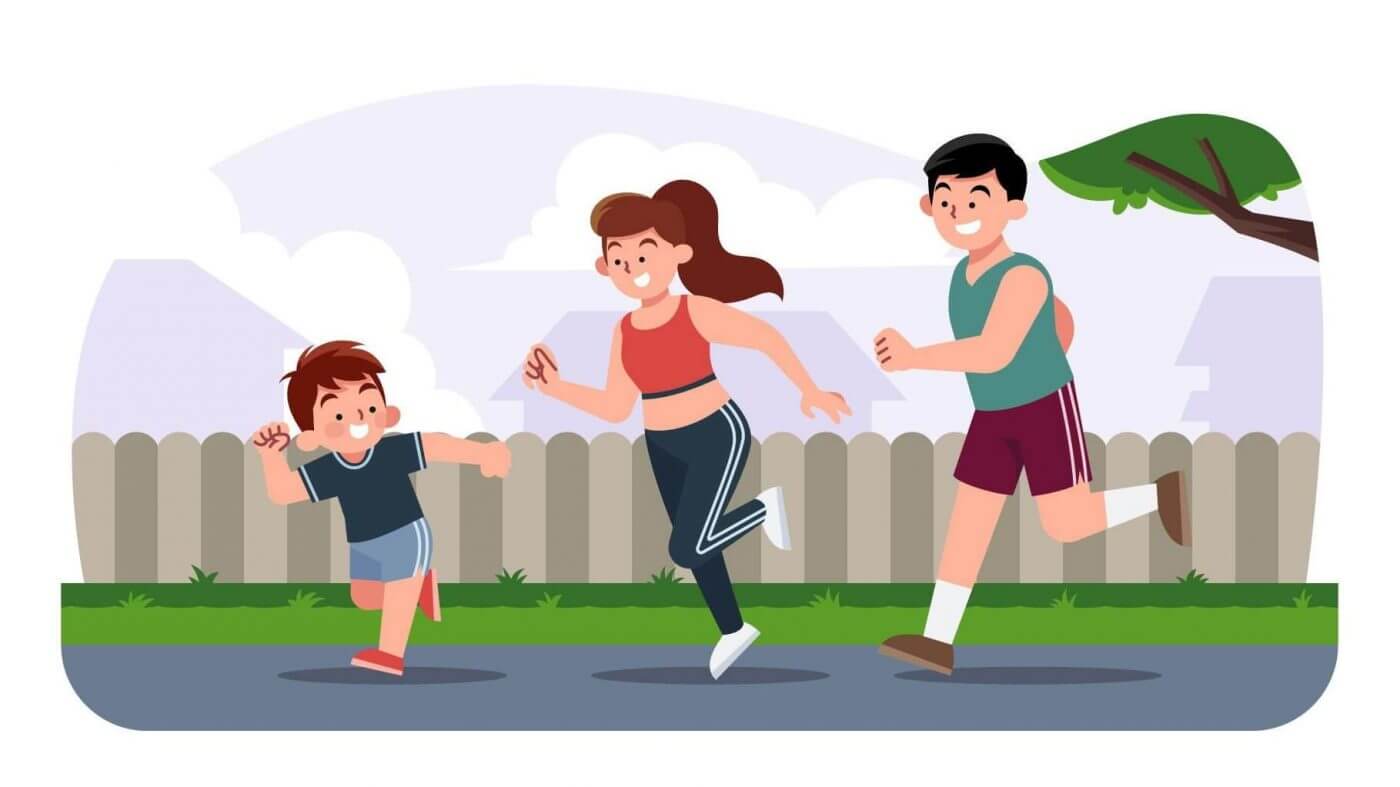
Gross motor exercises 101
Answering Parent Questions: Can Exercise Help My Child Get Better in motor skills?
The answer is YES, exercise can definitely help!
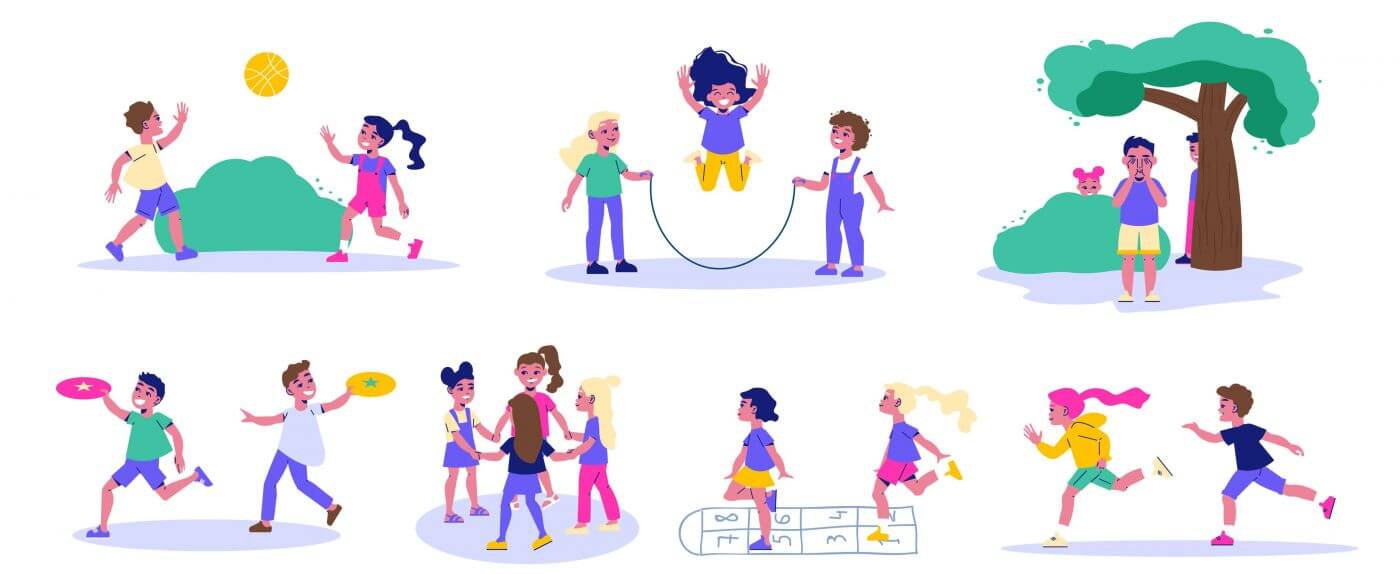
Gross motor skills refer to the capabilities that allow us to coordinately use the large muscles in our bodies for activities like balancing, standing upright, and playing sports. As previously mentioned, gross motor skills are developed using the proximal-distal principle. This principle suggests that distal skills, the functional use of our shoulders and hands, depend on the development of our proximal control, such as postural control and balance. To address this query, the advice we commonly offer to parents is, “Start with strengthening the core while concurrently practicing other skills.” Remember, every part of our body works together. When we have a stronger core – referring to our abdominal muscles – other parts of the body can perform more effectively too.
Parents often wonder, “How can we assist our children in improving these motor movements?” One good tip is to focus on building the core while also practicing other gross motor skills. Our bodies function optimally when all parts work together, not in isolation.
So, what kind of exercises can help your child improve these big movements?
Keep in mind that every child is unique and has their own likes and dislikes. Therefore, when choosing activities, it’s important to consider your child’s interests. After all, children learn more when they’re having fun! There’s a saying “play is a child’s work.” Playtime is not just enjoyable; it’s also a period when children develop their motor and cognitive skills. Playtime stimulates curiosity and allows for experimentation. The following activities can be integrated into play to greatly benefit your child’s gross motor skill development:
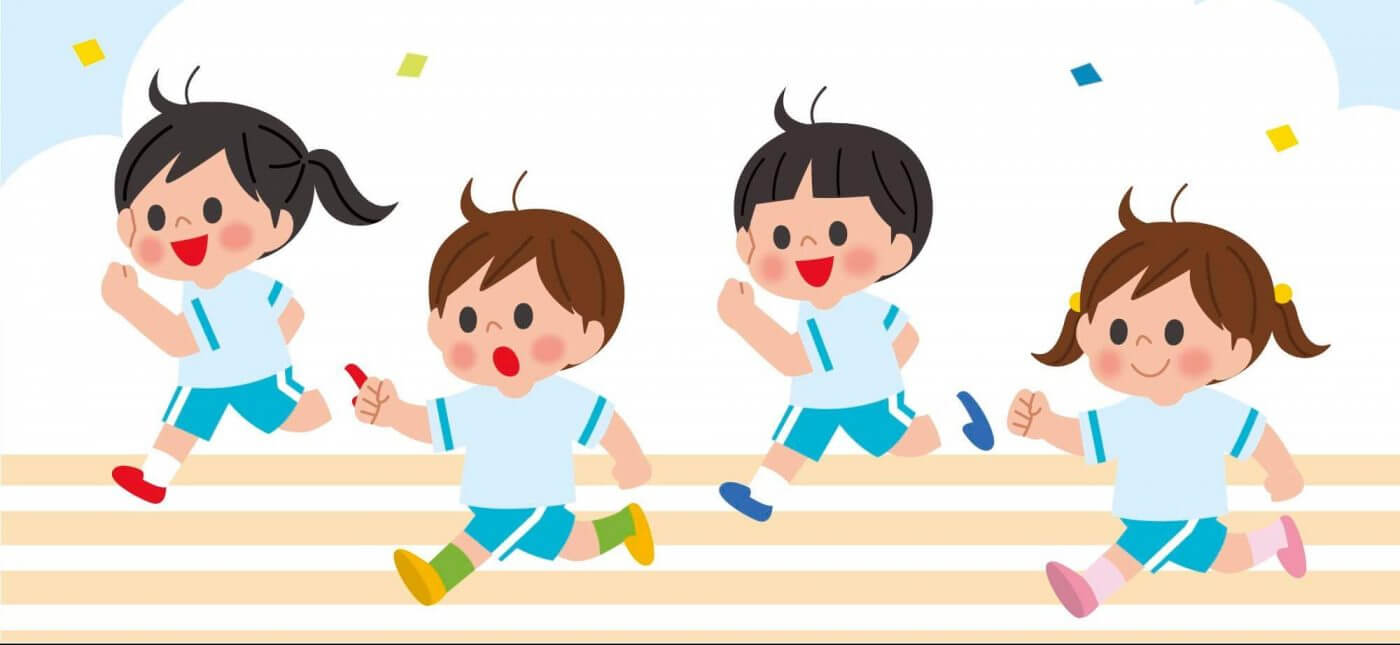
Running, Hopping, Crawling, Wheelbarrow Walks
These simple activities are some of the best ways to help children develop their overall gross motor skills. The World Health Organization recommends that children should be physically active every day to maintain their physical and mental health. These movements can help children build up strength and control in their large muscle groups, like the abdominal muscles, back muscles, and leg muscles, all crucial for more skilled tasks later on. Starting these activities at an early age can put children in a better position to learn other gross motor skills as they grow up, like playing ball games, participating in sports, and tackling physical tasks. Fun games such as ‘catch’ can be a delightful way for children to practice these skills.
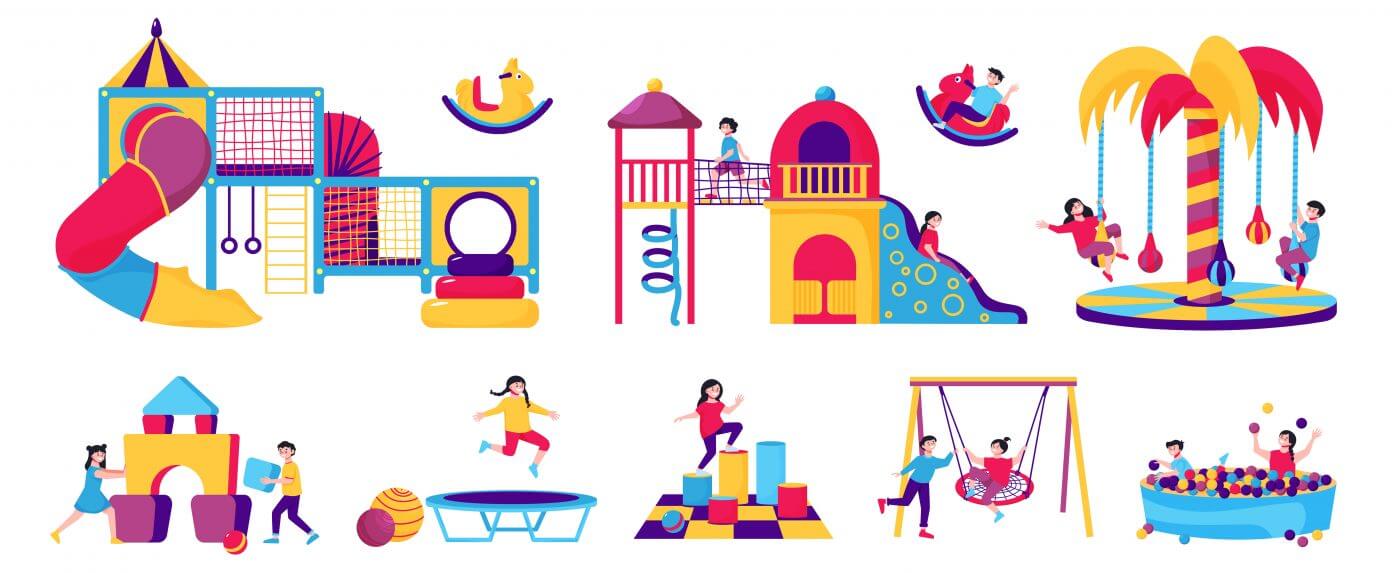
Obstacle Courses and Playgrounds
Obstacle courses and playgrounds are wonderful venues for children to improve their gross motor skills. They provide an opportunity for children to run, hop, and use their whole bodies in many different ways. Regular visits to playgrounds can significantly benefit a child’s development. You can create an obstacle course at home using simple items like cardboard boxes, chairs, pillows, and hula hoops. Alternatively, children can enjoy the ones available in playgrounds. It is important for us as adults to remember the value of spending time at the playground for children’s gross motor development. Just like the saying goes, “play is children’s work,” the playground can be likened to a little fitness centre for children. Fro example, hanging from monkey bars or climbing frames can significantly boost children’s shoulder and hand strength. Similarly, balance beams, hopping over small rocks, or playing hopscotch can greatly contribute to improving balance and coordination.
Animal walks
Animal walks are exercises where children imitate the movements of different animals. This fun-filled activity helps enhance their gross motor skills, focusing on coordination and core strength. Some popular animal walks that children love to imitate include:
- Bear Walk: Have them walk on all fours, but keep their bottom up high, just like a bear.
- Frog Jump: This involves crouching down, then leaping forward just like a frog does.
- Crab Walk: Lying on their backs, children slightly lift their hips off the ground and walk backwards using their hands and feet.
- Kangaroo Jump: This exercise involves children bending their knees, then springing up and forward in a big jump, just like a kangaroo.
- Caterpillar Crawl: To do this, children need to start by standing straight, bend over to touch the ground with their hands, then walk their hands forward into a push-up position, just like a caterpillar moves.
Core Exercises
Core strength is key to developing gross motor skills, and there are three exercises that children can easily do at home to work on this. To start, have them try each exercise for 15 seconds, and then gradually work up to 30 seconds as they get more comfortable.
Top Tip: Children can include these exercises in their daily routine. A perfect example is doing the Superman exercise while watching TV. Here’s a look at these exercises:
1. Superman: In this exercise, children are required to lie on their stomachs, lift their legs and arms off the ground, and maintain the position. It effectively targets the back muscles.
2. Crab: Children sit on the floor, place their palms on the floor behind them and lift their hips up. This focus on the shoulder strength and core muscles.
3. Egg: In this exercise, children lie on the floor, bend their knees, and pull their legs towards their chest. They cross their arms on their chest and hold this position, just like an egg. This exercise targets the abdominal muscles.
Coordination Exercises
Developing coordination is indeed key to enhancing a child’s gross motor skills. The following exercises can enhance a child’s ability to use both sides of their body, as well as their coordination between upper and lower limbs, in a more skilled way:
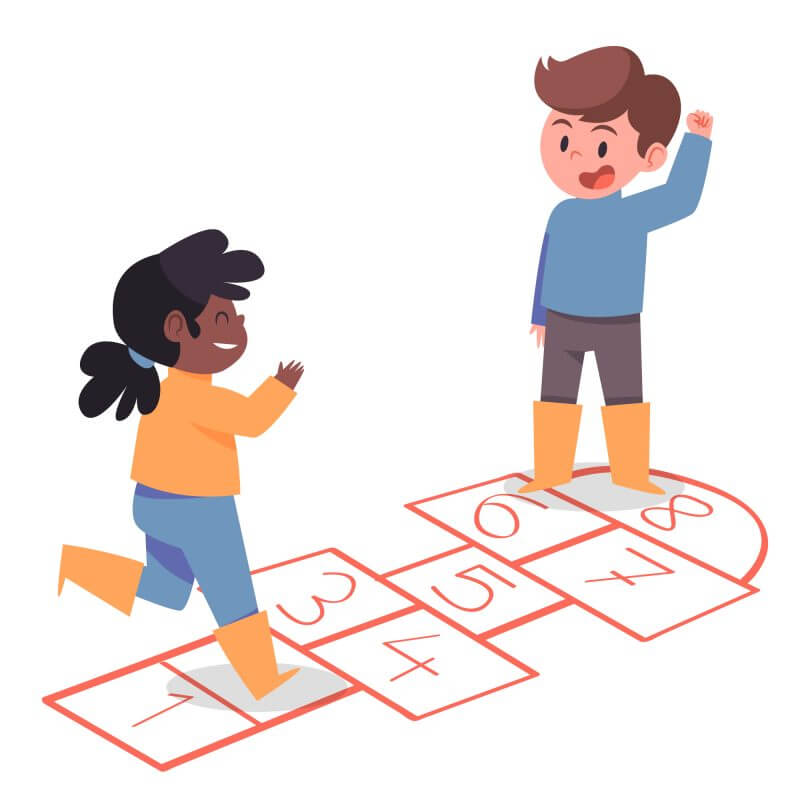
- Hopscotch: A timeless playground game, children hop or jump through the squares, enhancing their sense of balance and coordination.
- Two-Point Quadruped: In this exercise, while on all fours, children lift the opposite arm and leg without losing balance. This not only helps to boost core strength but also promotes coordination.
- Galloping: An exercise that mimics a horse’s gallop, where one foot steps forward and the other quickly follows, helping to develop rhythmic coordination between the legs.
- Star Jumps/Jumping Jacks: For this exercise, children begin in a standing position with their feet together and their arms at their sides. They proceed to jump, simultaneously spreading their feet and swinging their arms out and above their heads. Following this, another jump brings them back to the initial stance. This engaging activity amplifies coordination, strength, and endurance, simultaneously working multiple muscle groups.
- Skipping: Children can begin practicing skipping using the simple prompt, “step, hop, switch leg”. It might be easier for them to practice at a slower pace initially. As they progress and become more comfortable, children can start to incorporate their arms into the movement, swinging them in time with the alternate leg skip. This activity is a fun, rhythmic way to enhance both coordination and balance.
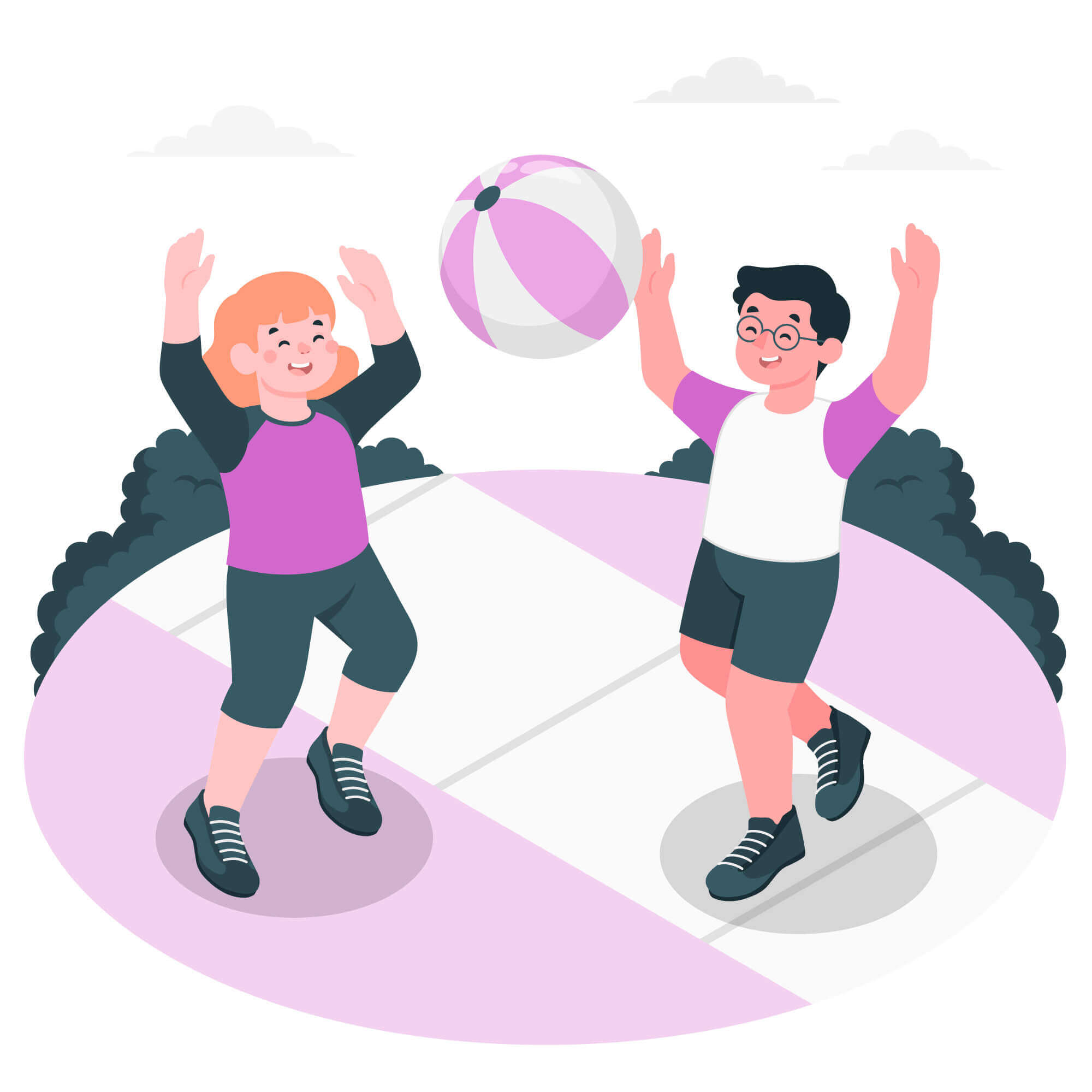
Ball Skills Exercises
Working on ball skills can really help children improve their coordination, and how they use both sides of their body. It’s also an excellent way to develop eye-hand coordination. Children can start with simple balloon games, then gradually progress to lighter plastic balls and eventually to heavier balls, like footballs. More skilled children might even want to try practices with a tennis ball. Here’s a look at some exercises:
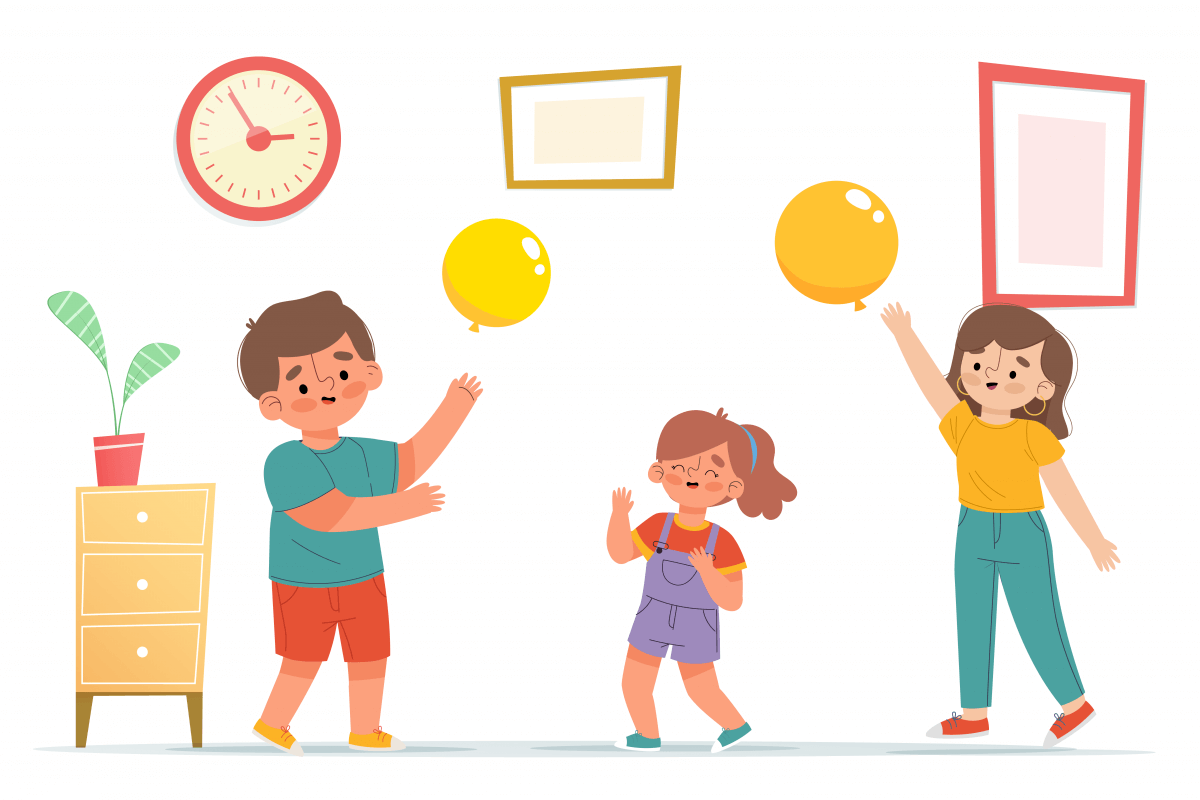
- Tapping: Have them practice tapping the balloon in the air and keep it from touching the ground.
- Tapping & Walking: As they get better at tapping the balloon, have them try tapping it while walking around.
- Tapping Volleyball: children can practice hitting the balloon back and forth with someone else, like in a game of volleyball.
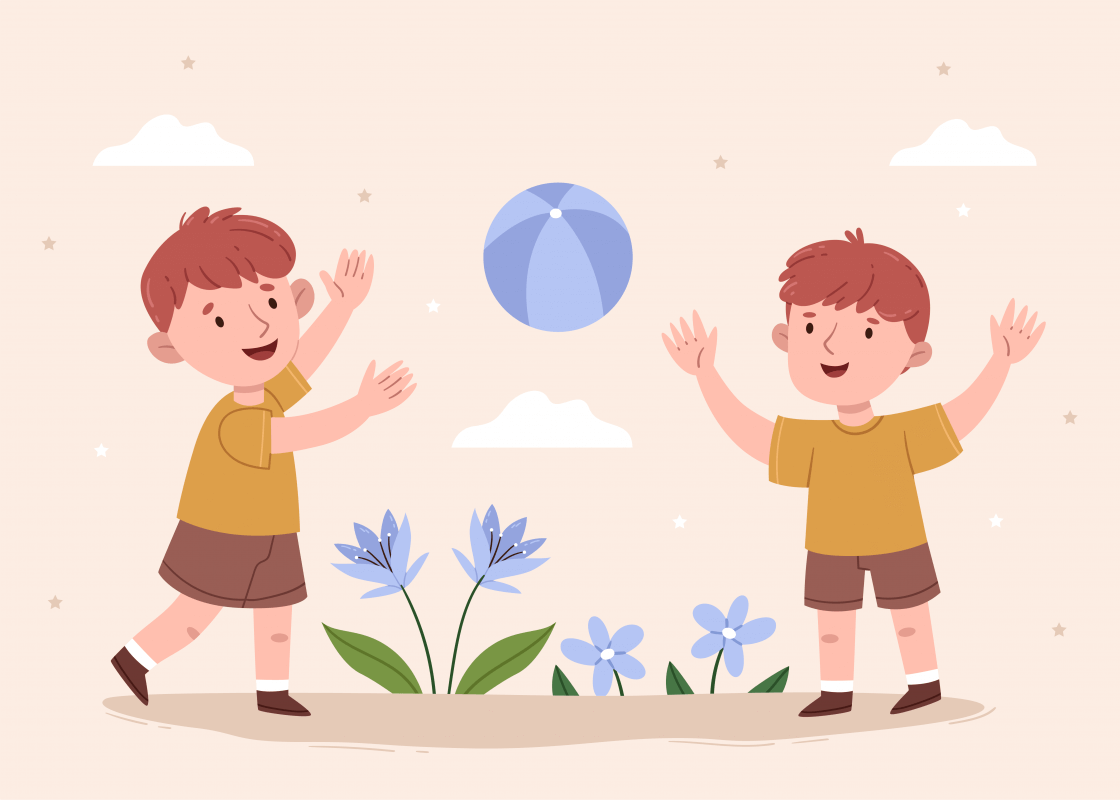
- Catch and Throw: Throw a ball back and forth with your child to help them practise catching and throwing.
- Throwing to Object: Set up a target and have your child throw the ball at it to improve accuracy.
- Mix and Match (Superman + Throwing): Have your child lie on their stomach (like in the Superman exercise), then get up quickly to throw a ball at a target. This is excellent for agility.
- Bounce and Catch: Have your child practice throwing a ball so it bounces back to them off a wall or the ground. This helps work on their reaction skills and eye-hand coordination.
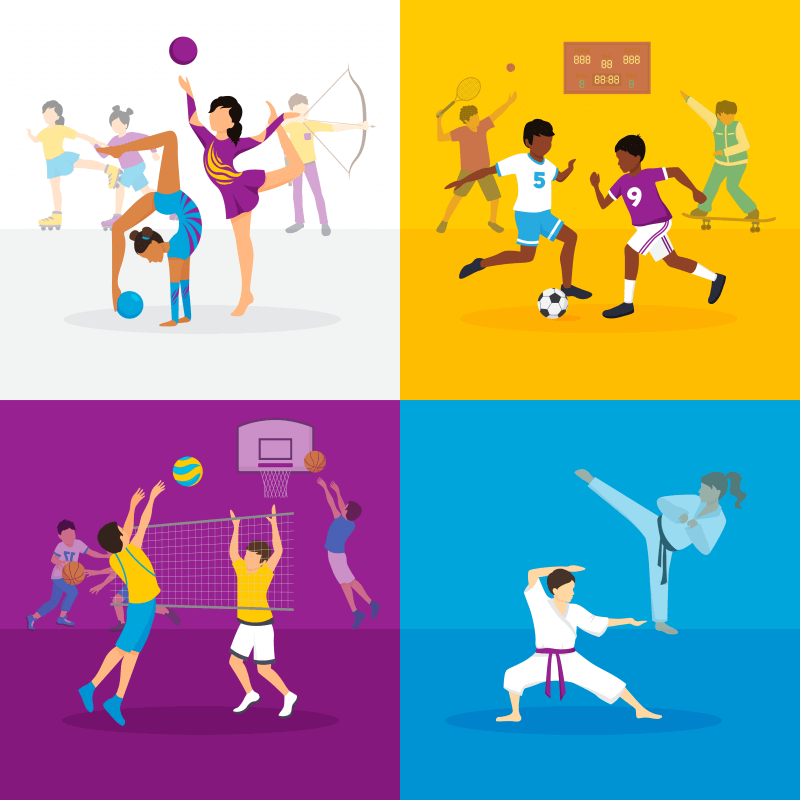
Apart from activities at home, trying out different sports and physical activities can also greatly benefit a child’s gross motor skills. Parents could explore a variety of activities with their children to understand their preferences and strengths. Some of these activities could include:
- Swimming: This can boost arm and leg coordination, with great benefit in cardio-respiratory system (building breathe capacity and endurance).
- Taekwondo: This martial art can significantly enhance balance, agility, and discipline.
- Track and Field: These activities are excellent for promoting children’s abilities in running, jumping, and throwing.
- Gymnastics: This sport wonderfully improves body strength, flexibility, and coordination.
- Team Sports: Football, basketball, baseball, and others can help children to work on coordination, strength and teamwork.
- And there are many more!
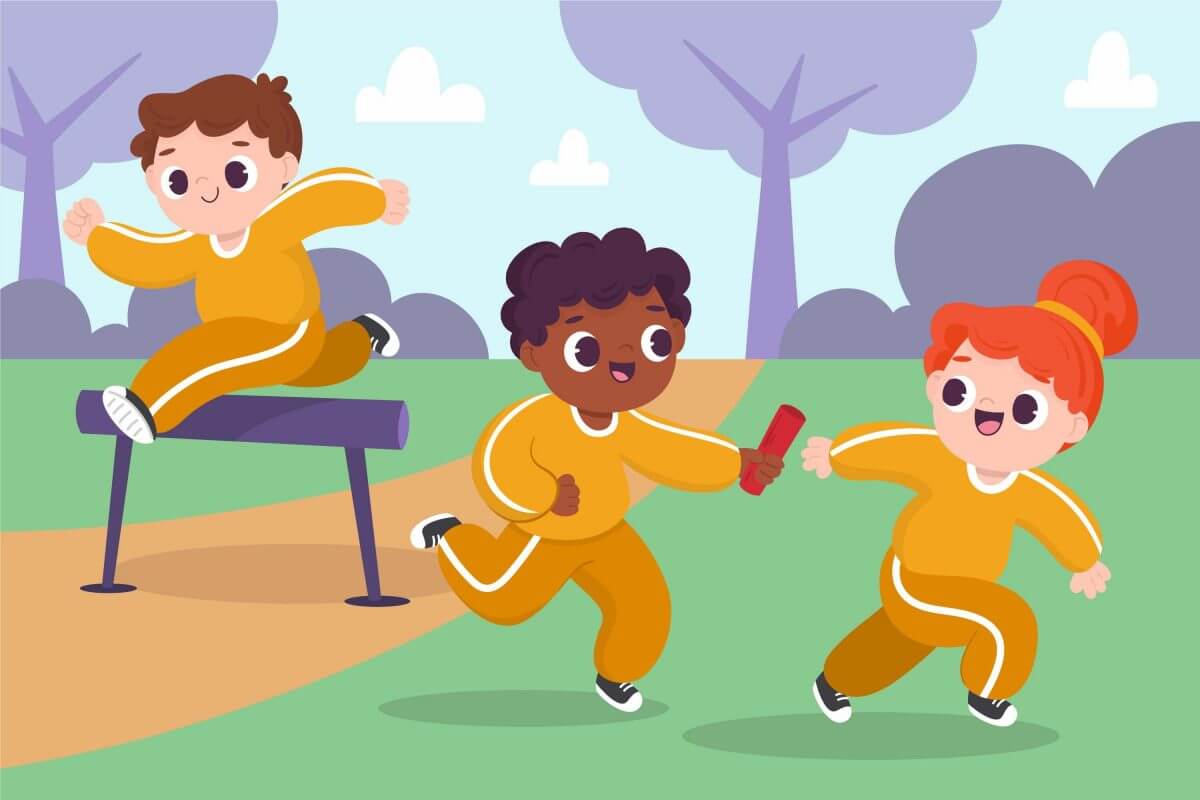
All physical activities can be beneficial as long as they’re appropriate for the child’s age. Parents and professionals can explore different activities with children and include these activities in their daily routine. Keeping an active lifestyle plays a big supporting role in helping children grow up healthier, both physically and mentally.
Au, M. K., Chan, W. M., Lee, L., Chen, T. M., Chau, R. M., & Pang, M. Y. (2014). Core stability exercise is as effective as task-oriented motor training in improving motor proficiency in children with developmental coordination disorder: a randomized controlled pilot study. Clinical rehabilitation, 28(10), 992-1003.
Barnett, L.M., Hnatiuk, J.A., Salmon, J. et al. Modifiable factors which predict children’s gross motor competence: a prospective cohort study. Int J Behav Nutr Phys Act 16, 129 (2019). https://doi.org/10.1186/s12966-019-0888-0
Burns, R. D., Fu, Y., Fang, Y., Hannon, J. C., & Brusseau, T. A. (2017). Effect of a 12-week physical activity program on gross motor skills in children. Perceptual and motor skills, 124(6), 1121-1133.
Dewar, R., Love, S., & Johnston, L. M. (2015). Exercise interventions improve postural control in children with cerebral palsy: a systematic review. Developmental Medicine & Child Neurology, 57(6), 504-520.
Gerber, R. J., Wilks, T., & Erdie-Lalena, C. (2010). Developmental milestones: motor development. Pediatrics in review, 31(7), 267-277.
Han, A., Fu, A., Cobley, S., & Sanders, R. H. (2018). Effectiveness of exercise intervention on improving fundamental movement skills and motor coordination in overweight/obese children and adolescents: A systematic review. Journal of science and medicine in sport, 21(1), 89-102.
Martin, P., & Martin, M. (2002). Proximal and distal influences on development: The model of developmental adaptation. Developmental Review, 22(1), 78-96.
Pan, C. Y., Tsai, C. L., Chu, C. H., Sung, M. C., Huang, C. Y., & Ma, W. Y. (2019). Effects of physical exercise intervention on motor skills and executive functions in children with ADHD: A pilot study. Journal of attention disorders, 23(4), 384-397.
Rostami, R., & Ghaedi, M. (2017). Core stabilization training and fundamental motor skills in children. International Journal of School Health, 4(1), 1-5.
Westcott, S. L., & Burtner, P. (2004). Postural control in children: implications for pediatric practice. Physical & occupational therapy in pediatrics, 24(1-2), 5-55.
World Health Organization. Physical Activity. World Health Organisation. DOI: https://www.who.int/news-room/fact-sheets/detail/physical-activity.
